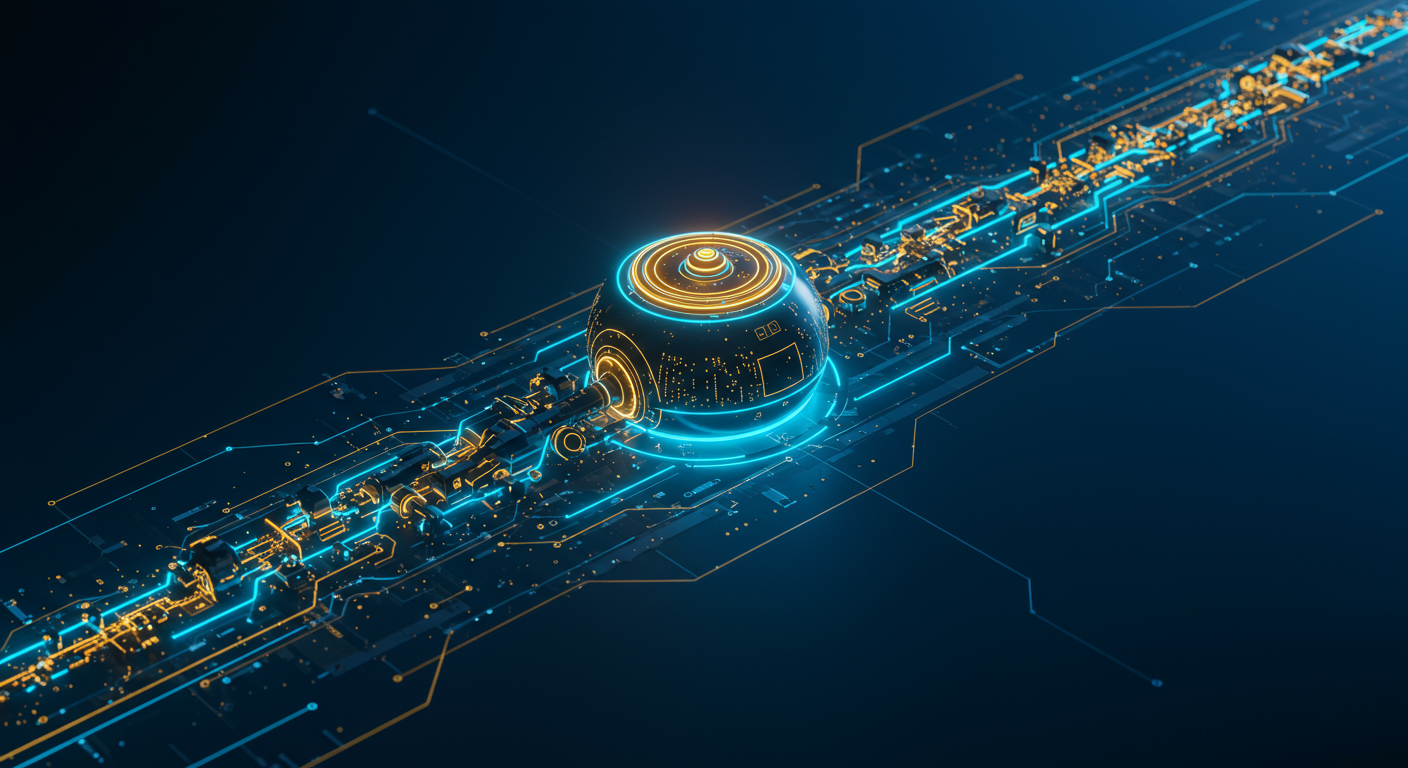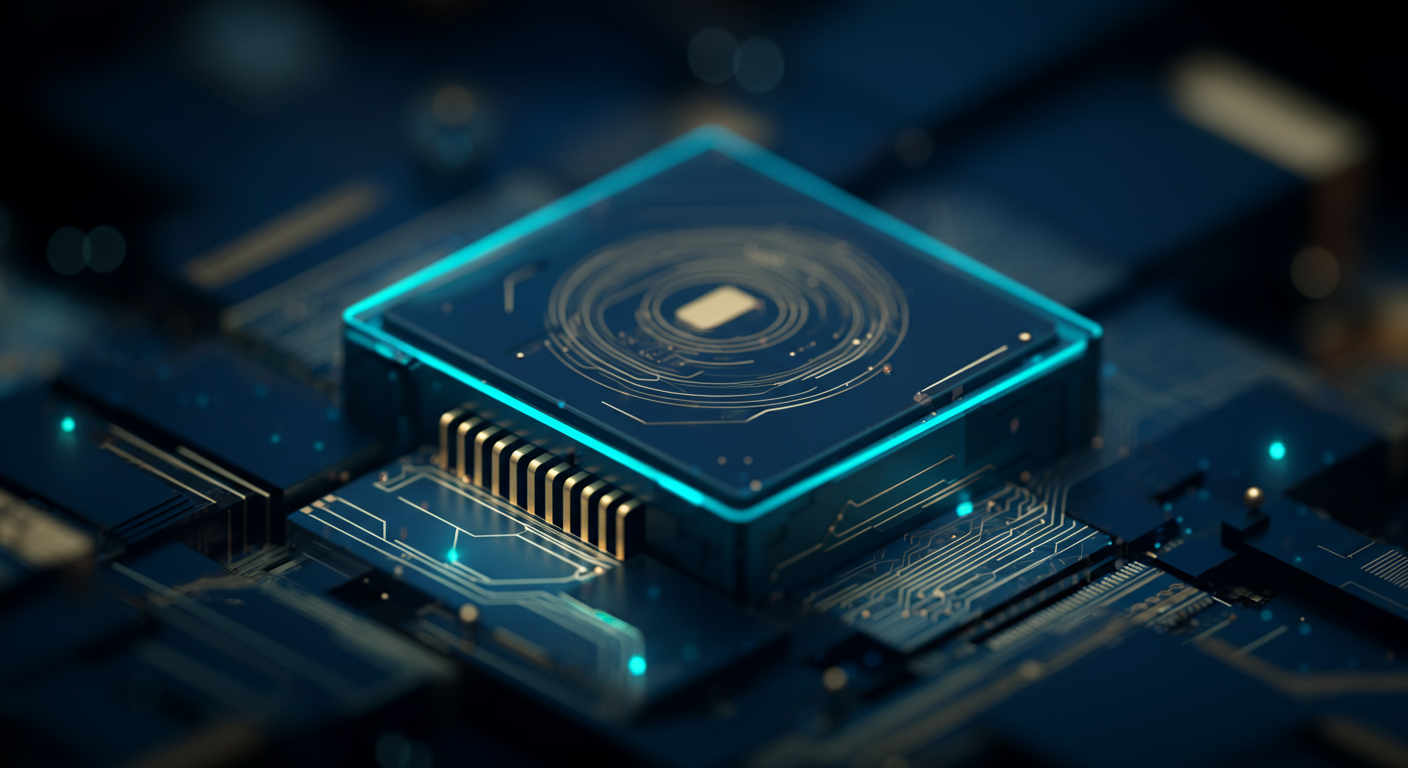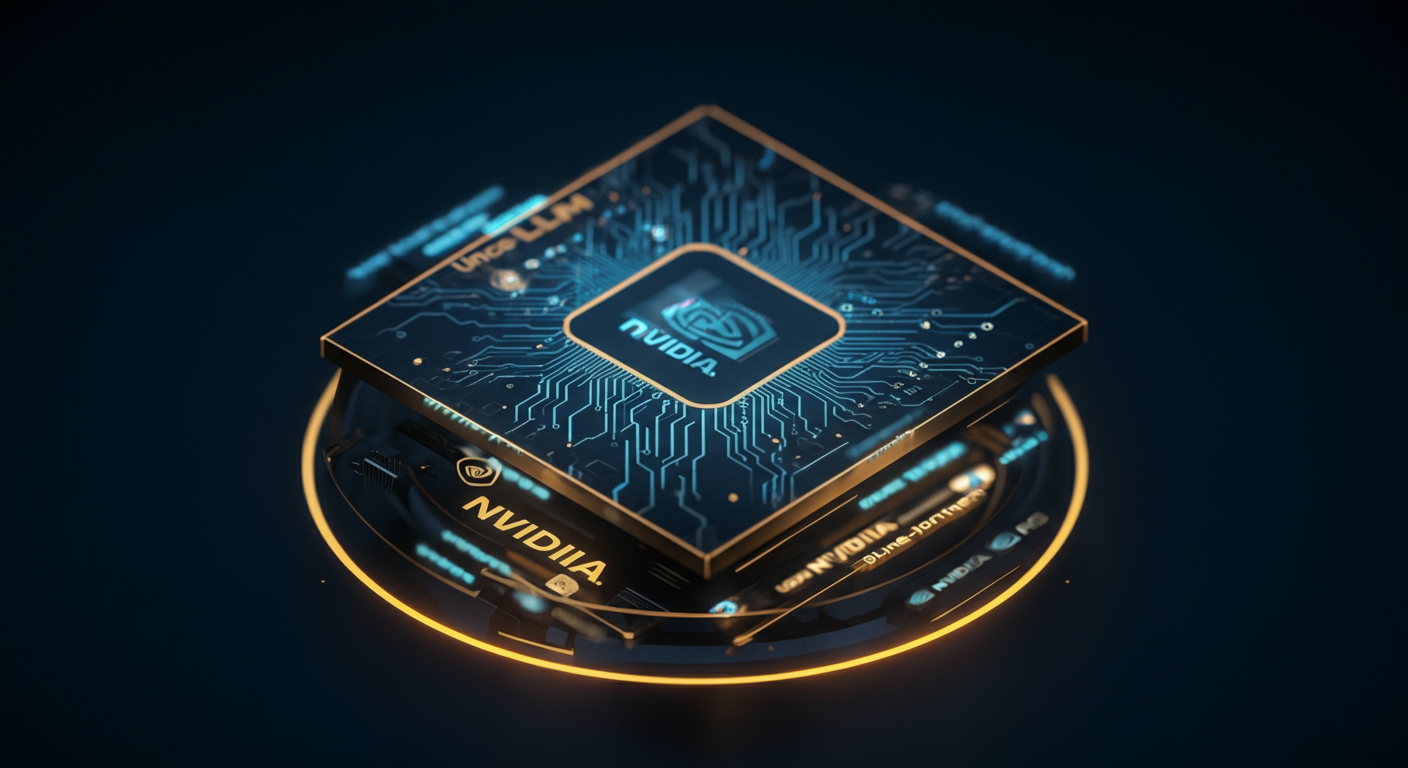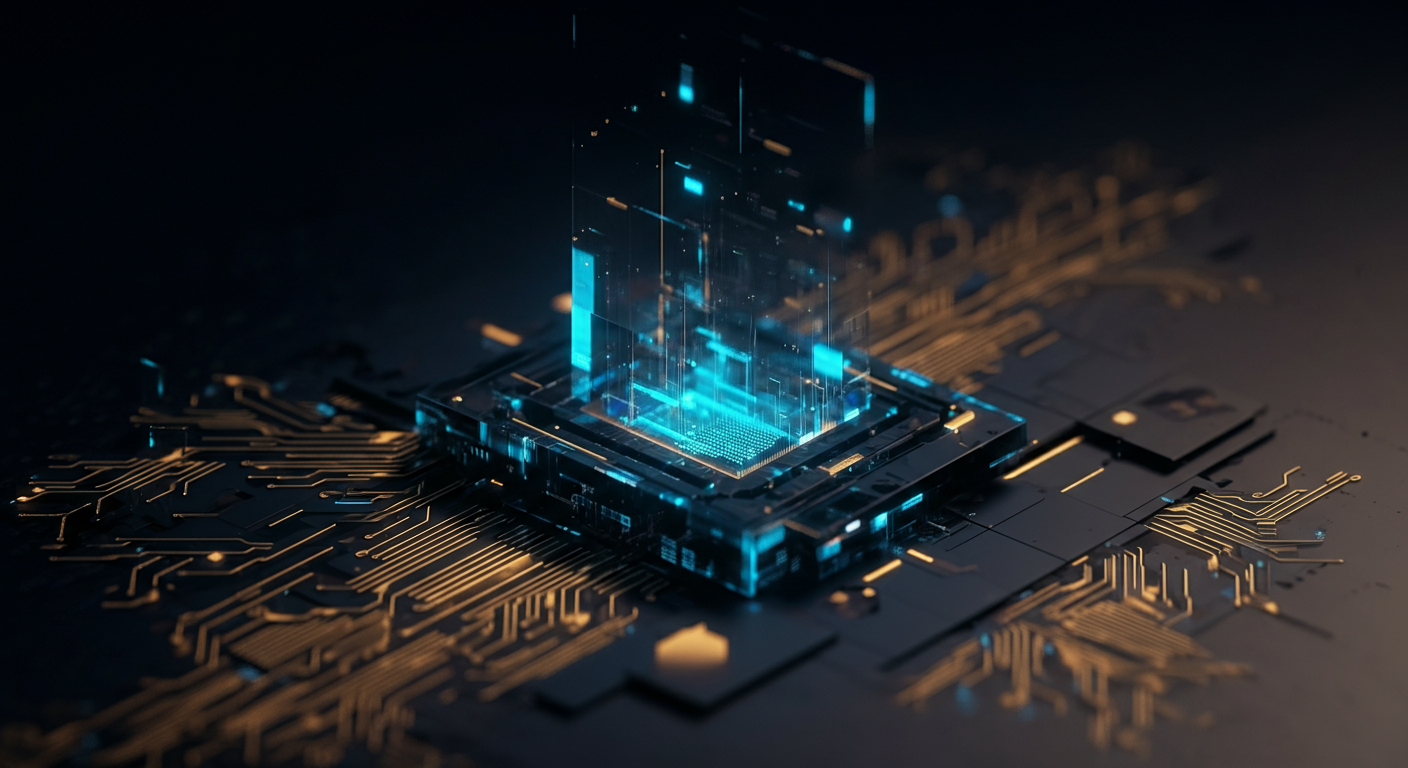Unlocking AI Efficiency: A Deep Dive into Model Distillation Techniques

Introduction: The Quest for Leaner AI
Imagine a world where the power of AI is accessible to everyone, regardless of their computational resources – AI Model Distillation is making that dream a reality.
The Big AI Problem
Large AI models, while powerful, are resource hogs. They demand:
- Massive Computing Power: Training and running them can be expensive, limiting accessibility.
- High Energy Consumption: Contributes to a larger carbon footprint (not ideal, right?).
- Slow Inference Speeds: Can be impractical for real-time applications like mobile devices.
Distillation to the Rescue
This is where AI model distillation steps in. Think of it as a process where we take a large, complex model ("teacher") and train a smaller, simpler one ("student") to mimic its behavior. This results in:
- Efficient AI: Smaller models require less computational power, making AI more cost-effective AI.
- Faster AI Inference: Distilled models are quicker, ideal for edge computing and mobile applications enhancing AI Inference Speed.
- Democratized AI: By reducing resource demands, distillation paves the way for wider efficient AI adoption and innovation.
What's Next?
We'll explore the techniques behind this fascinating process, showing you how AI Model Optimization is shaping the future of Smaller AI Models.
It's time to make your AI models lighter and faster using a technique called model distillation.
What is AI Model Distillation? The Core Principles
At its heart, AI model distillation is about knowledge transfer. The goal? To transfer the smarts from a big, complex "teacher" model to a smaller, more efficient "student" model. Think of it as compressing a vast library into a pocket-sized guide.
The Distillation Process Explained
The process isn't simply about shrinking the model; it's about how you transfer the knowledge:
- Soft Labels: Instead of just using "hard" labels (e.g., "this is a cat"), the teacher model provides "soft" probabilities, indicating the likelihood of various classes. The difference between Hard Labels and Soft Labels is this;
- Student Model Training: The student model is trained using the soft labels from the teacher, resulting in a model that is smaller and faster, yet retains much of the teacher's accuracy.
Why Soft Labels Matter
Soft labels provide more information than hard labels. For example, the teacher might output a 90% probability for "cat", 7% for "dog," and 3% for "hamster". The student learns that, even if it's a cat, it shares some features with dogs and hamsters. This subtle data is crucial for Knowledge transfer in AI.
The Teacher-Student Architecture
The teacher-student model architecture is central to model distillation; The teacher is a pre-trained, high-performing model. It could be a large language model, or a complex image recognition network. The student is a smaller model designed for faster inference and lower computational cost.
Model distillation allows you to create leaner AI without sacrificing performance, and it’s a technique worth exploring. If all this AI talk is confusing, you can always check out our AI Glossary to brush up.
Unlocking AI efficiency often feels like shrinking a star into a manageable power source – model distillation is how we pull that off.
The Benefits of Model Distillation: Beyond Size Reduction
Model distillation involves training a smaller, "student" model to mimic the behavior of a larger, pre-trained "teacher" model. While size reduction is a primary outcome, the benefits extend far beyond mere compression.
- Reduced Computational Cost: Smaller models demand less processing power.
- Faster Inference Speed: Simpler models translate to quicker predictions. This is crucial in time-sensitive applications. Faster AI inference means lower latency for real-time decisions.
- Lower Energy Consumption: Energy efficiency is critical, especially for widespread deployment of AI. Low-power AI makes applications more sustainable.
Deployment Possibilities
The portability gains unlock new avenues for AI deployment.
- Mobile Devices: Imagine running complex AI directly on your phone without draining the battery.
- Edge Computing: Process data closer to the source, reducing reliance on cloud infrastructure and enabling AI on edge devices. Model distillation can be a key component for AI on edge devices.
- IoT Devices: Powering smart sensors and connected devices with sophisticated, yet lightweight AI algorithms.
Enhanced Privacy
Smaller models are inherently more secure.
- Reduced Attack Surface: With fewer parameters, distilled models are less susceptible to certain adversarial attacks.
- Potential Case Study: Banks using smaller AI for fraud detection, safeguarding financial transactions. Secure AI models are essential for safeguarding personal information.
Model distillation is how we turn those brainy, but bulky, AI models into sleek, efficient versions without losing too much smarts.
Popular Distillation Techniques: A Comparative Overview

Several model distillation techniques have emerged, each offering unique advantages and catering to different AI task requirements. Let's break down some of the big hitters:
- Knowledge Distillation: This technique, pioneered by Hinton et al., is where a large, pre-trained "teacher" model transfers its knowledge to a smaller "student" model. ChatGPT can be useful here to guide the process. Instead of just mimicking the teacher's final decisions, the student learns from the teacher's "soft" probability distributions, capturing richer information.
- Hint Learning: Hint learning goes a step further by not just using the final output of the teacher model, but also using intermediate layer activations as "hints" for the student. The student attempts to mimic these internal representations, leading to better performance. This is especially useful if you are looking at Software Developer Tools that focus on model efficiency.
- Attention Transfer: This focuses on transferring attention maps from the teacher to the student. Attention maps highlight the most important parts of the input that the model focuses on. By aligning the student's attention with the teacher's, we can ensure the student learns the most relevant features. Imagine focusing your studying on the most important topics from the learn/glossary instead of all topics equally.
- Adversarial Distillation: This method employs adversarial training, where a discriminator tries to distinguish between the outputs of the teacher and student models, and the student tries to fool the discriminator. This process forces the student to generate outputs that are indistinguishable from the teacher, thus improving its accuracy and robustness.
| Technique | Key Feature | Strengths | Weaknesses |
|---|---|---|---|
| Knowledge Distillation | Soft probability distributions | Simple to implement, effective for various tasks | Student may not fully capture complex relationships |
| Hint Learning | Intermediate layer activations as "hints" | Improved performance by learning internal representations | More complex to implement than knowledge distillation |
| Attention Transfer | Transfer of attention maps | Focuses on learning relevant features, improves interpretability | May require careful design of attention mechanisms |
| Adversarial Distillation | Uses a discriminator to match teacher and student outputs | Robust and can achieve high accuracy | Training can be unstable; requires careful tuning |
Each of these techniques can be powerful tools in your AI arsenal, depending on the specific model, task, and resources you're working with.
In summary, model distillation offers a spectrum of techniques to compress and accelerate AI models, paving the way for more efficient and accessible AI applications. Keep experimenting, and who knows – maybe you'll discover the next big breakthrough in AI efficiency.
With model distillation, we're not just making AI smaller; we're making it smarter about how it operates in the real world.
Real-World Applications of Model Distillation: Use Cases
Model distillation is increasingly vital for deploying AI across diverse sectors, optimizing large models for resource-constrained environments. It lets us have our cake and eat it too - complex AI, accessible everywhere.
Computer Vision and Image Processing
Imagine running complex image recognition not on a server farm, but directly on a phone.
- Embedded Systems Optimization: Compressing computer vision models is essential for embedded systems like drones or security cameras. For example, optimizing image recognition models makes real-time object detection feasible even with limited processing power.
- AI for Mobile: Model distillation allows resource-intensive tasks, such as running Design AI Tools on mobile devices without draining the battery.
Natural Language Processing (NLP)
Distillation in NLP allows for streamlined applications on devices with limited memory and processing capabilities.
- AI for Mobile Devices: Distilling large language models allows your phone to understand and generate text without needing a constant data connection.
- AI Assistants: Optimizing language models enables quick and efficient responses, making ChatGPT like interactions possible on various platforms.
Industry Specific AI
Model distillation's impact extends to sectors requiring efficient and accurate AI, such as healthcare, finance, and autonomous driving.
- AI in Healthcare: In healthcare, distilled models can assist in rapid image analysis (X-rays, CT scans) for faster diagnostics.
- AI for Autonomous Vehicles: Autonomous driving depends on rapid decision-making; optimized models ensure real-time processing of sensor data.
- AI in Finance: Distillation can help financial institutions deploy fraud detection systems that operate with minimal latency and resource usage.
Model distillation sounds like turning lead into gold, doesn't it? The reality, like all alchemy, has its limitations.
The Challenges and Limitations of Distillation

While model distillation offers a powerful approach to creating efficient AI, it's not without its bumps along the road. Let's unpack some key challenges:
Accuracy Loss in Distillation: It's almost inevitable: squeezing a large model's knowledge into a smaller one can lead to some* accuracy loss. The student model might not perfectly replicate the teacher's performance, especially on complex tasks. Think of it like copying a master painting—you might capture the essence, but the finer details can get lost in translation.
- Hyperparameter Tuning for Distillation: Finding the right distillation "recipe" often involves a fair bit of experimentation.
This process can be time-consuming and requires a solid understanding of the underlying algorithms. It's akin to calibrating a finely tuned instrument – get it wrong, and the music is off.
- Bias in Distilled Models: If your teacher model harbors biases, guess what? Those biases can easily be transferred to the student model during distillation. This is particularly concerning in sensitive applications like facial recognition or loan applications. Mitigating this requires careful consideration of data and algorithms, similar to addressing societal biases in education.
- Limitations of Model Compression: Not all complex models are easily distilled. Some architectures or specific tasks might prove particularly resistant to compression without significant performance degradation. In some cases, it may be a better approach to prune the original network.
Unleashing the full potential of AI means making it smaller, faster, and more energy-efficient, and model distillation is leading the charge.
Automated Model Distillation: The Next Frontier
- Automated model distillation Automated model distillation is poised to democratize AI development. Forget painstakingly hand-tuning student models – AI will automate the process of shrinking larger models.
- Neural Architecture Search (NAS) for distillation: The rise of Neural Architecture Search (NAS) combined with distillation is a game-changer. NAS for distillation fine-tunes the student model architecture, leading to more efficient and accurate distilled models.
- Generative Models Get the Distillation Treatment: Distillation isn’t just for classification models anymore. > Distilling generative models allows us to create smaller, faster versions capable of producing high-quality images, text, and audio. Imagine having a lightweight version of Midjourney running directly on your phone!
Combining Techniques for Maximum Compression
Distillation works even better when combined with other compression methods:
- Quantization: Reducing the precision of the model's weights makes it smaller and faster.
- Pruning: Removing less important connections further reduces the model's footprint.
Sustainable and Accessible AI
Model distillation isn't just about performance; it's about creating a more sustainable and accessible AI ecosystem:
- Reduced Energy Consumption: Smaller models require less power, making AI more environmentally friendly.
- Accessibility: Distilled models can run on resource-constrained devices, opening up AI to a wider range of applications and users.
It's time to acknowledge model distillation as a cornerstone for a smarter, more accessible AI future.
Democratizing AI
Model distillation isn't just about shrinking models; it's about democratizing AI. Imagine the powerful ChatGPT, a conversational AI tool, running seamlessly on your phone. Distillation makes this reality possible by reducing computational demands.“Distillation allows us to take the knowledge of a large, complex model and transfer it to a smaller, more efficient one."
Efficiency and Sustainability
We're talking about efficient AI deployment. This isn't just about speed; it's about sustainability. Consider the environmental impact of massive data centers powering complex models. Distillation cuts down on energy consumption, paving the way for sustainable AI development. Using AI for Scientific Research becomes more practical and eco-friendly.Looking Ahead
The future? Distillation will continue to refine AI, enabling deployment in resource-constrained environments, personalized experiences on edge devices, and even more powerful cloud-based solutions. The Prompt Library will explode as distilled models allow for fine-tuned, context-aware applications.Ready to build the future? Dive in and experiment with distillation techniques; the possibilities are limitless!
Keywords
AI Model Distillation, Model Distillation, Knowledge Distillation, Efficient AI, Smaller AI Models, AI Model Compression, Teacher-Student Model, AI Inference Speed, Low-Power AI, AI on Edge Devices, Distilled Models, Deep Learning Compression, Model Optimization, AI Deployment
Hashtags
#AIMODEL #ModelDistillation #EfficientAI #DeepLearning #AIoptimization
Recommended AI tools
ChatGPT
Conversational AI
AI research, productivity, and conversation—smarter thinking, deeper insights.
Sora
Video Generation
Create stunning, realistic videos and audio from text, images, or video—remix and collaborate with Sora, OpenAI’s advanced generative video app.
Google Gemini
Conversational AI
Your everyday Google AI assistant for creativity, research, and productivity
Perplexity
Search & Discovery
Clear answers from reliable sources, powered by AI.
DeepSeek
Conversational AI
Efficient open-weight AI models for advanced reasoning and research
Freepik AI Image Generator
Image Generation
Generate on-brand AI images from text, sketches, or photos—fast, realistic, and ready for commercial use.
About the Author

Written by
Dr. William Bobos
Dr. William Bobos (known as 'Dr. Bob') is a long-time AI expert focused on practical evaluations of AI tools and frameworks. He frequently tests new releases, reads academic papers, and tracks industry news to translate breakthroughs into real-world use. At Best AI Tools, he curates clear, actionable insights for builders, researchers, and decision-makers.
More from Dr.

